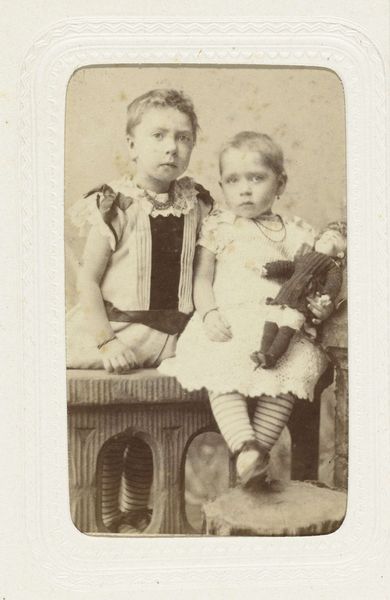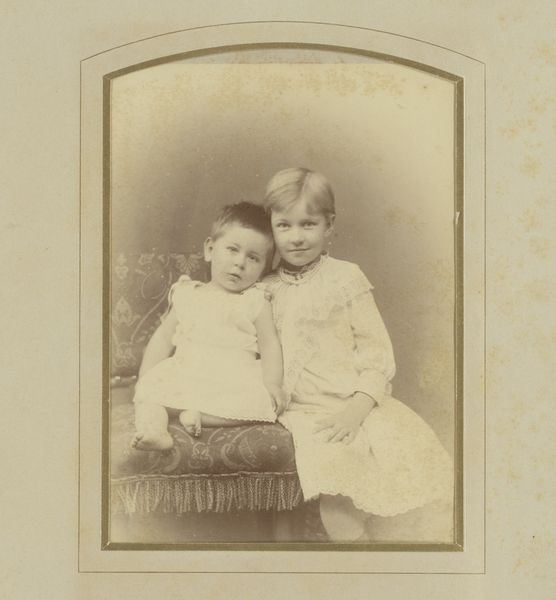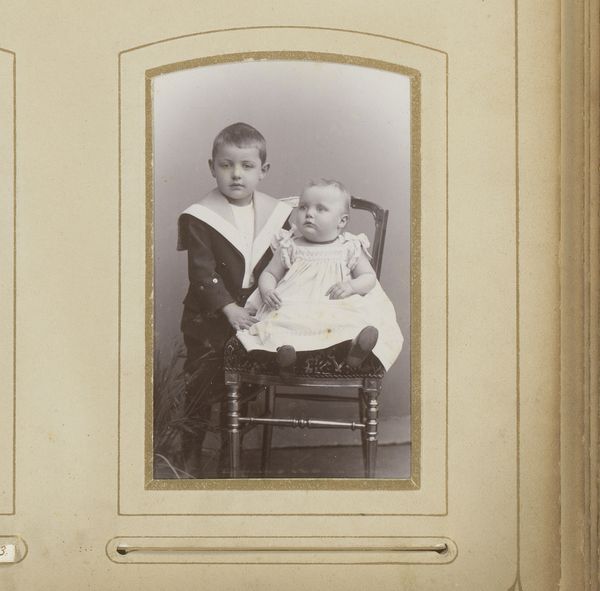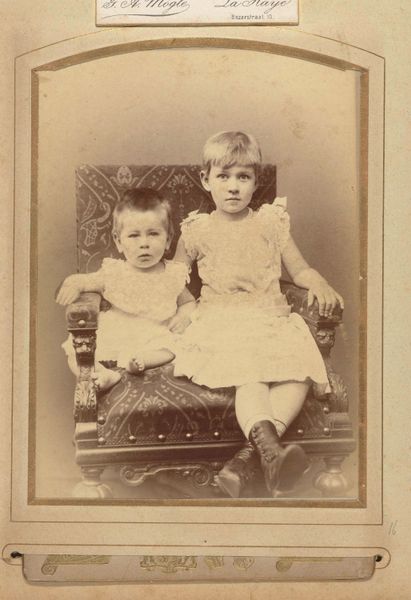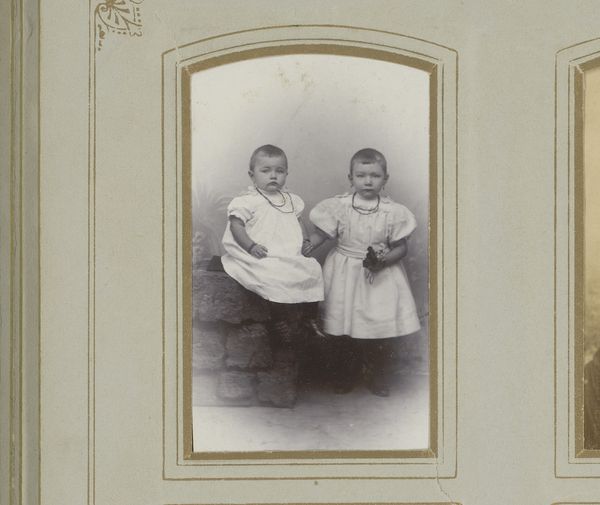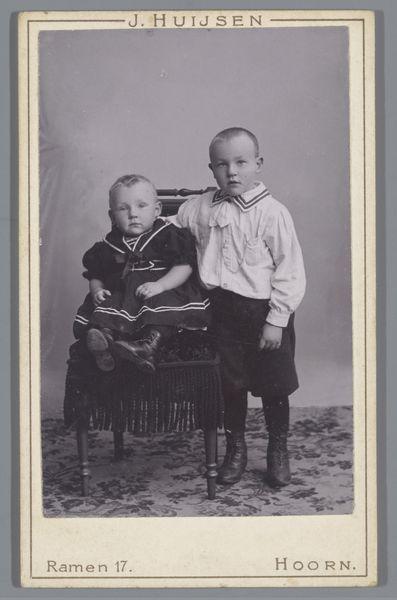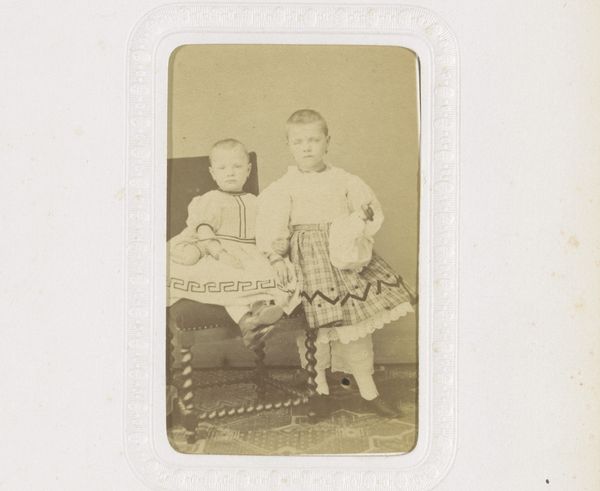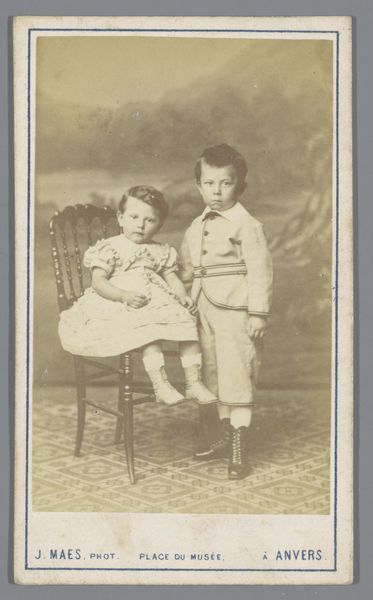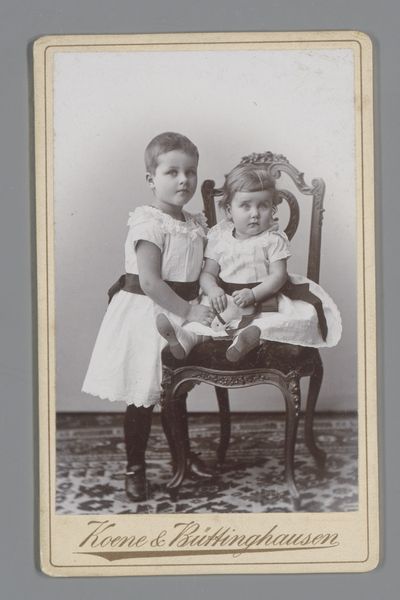
photography, albumen-print
#
portrait
#
16_19th-century
#
archive photography
#
photography
#
historical photography
#
19th century
#
genre-painting
#
albumen-print
Dimensions: height 80 mm, width 54 mm, height 296 mm, width 225 mm
Copyright: Rijks Museum: Open Domain
Curator: This albumen print, simply titled "Studioportret van twee meisjes", or "Studio Portrait of Two Girls," was created sometime between 1863 and 1866 by Carl Rensing. It resides here at the Rijksmuseum. Editor: The texture really draws me in. You can almost feel the weight of the fabrics in their dresses and see the distinct pattern on the rug beneath their feet. Curator: I think we can view it as a constructed representation of childhood in the mid-19th century. Consider the setting—a photography studio rather than a natural environment. How does that context shift our reading? Editor: Significantly! These settings become crucial sites of production, places where the image is deliberately crafted and circulated for specific reasons like commerce and identity. Note how the clothing becomes significant. Curator: Yes, plaid dresses are a deliberate choice. Plaid often stood for middle class ideals, but they could also easily become repetitive. The lack of spontaneity in pose and dress raises the questions of uniformity versus individual identity. Editor: Absolutely, and that uniform pattern hints at larger mechanized production techniques. Looking at those fabrics closely, understanding their material origin, dyeing processes, and the labor involved reveals a whole new social history. The chair, too, is interesting; factory-made and ubiquitous. Curator: It is interesting how photography democratizes the genre of portraiture, which until then, was limited to the higher classes who could afford it. Who has access to having their image captured and remembered and what are the lasting cultural implications? Editor: Precisely. Thinking about who’s absent is important, too. Consider the underpaid women laborers in textile factories producing these fabrics and how it affects society, how it creates this particular scene. The consumption relies upon an established and oppressive manufacturing practice. Curator: This image shows us not just the sitters themselves, but also wider dynamics around labor, consumerism, and class mobility. Editor: It becomes a study of the very material conditions that allowed such images to be produced and preserved, pointing towards a complex historical narrative that is made apparent in an accessible product.
Comments
No comments
Be the first to comment and join the conversation on the ultimate creative platform.
